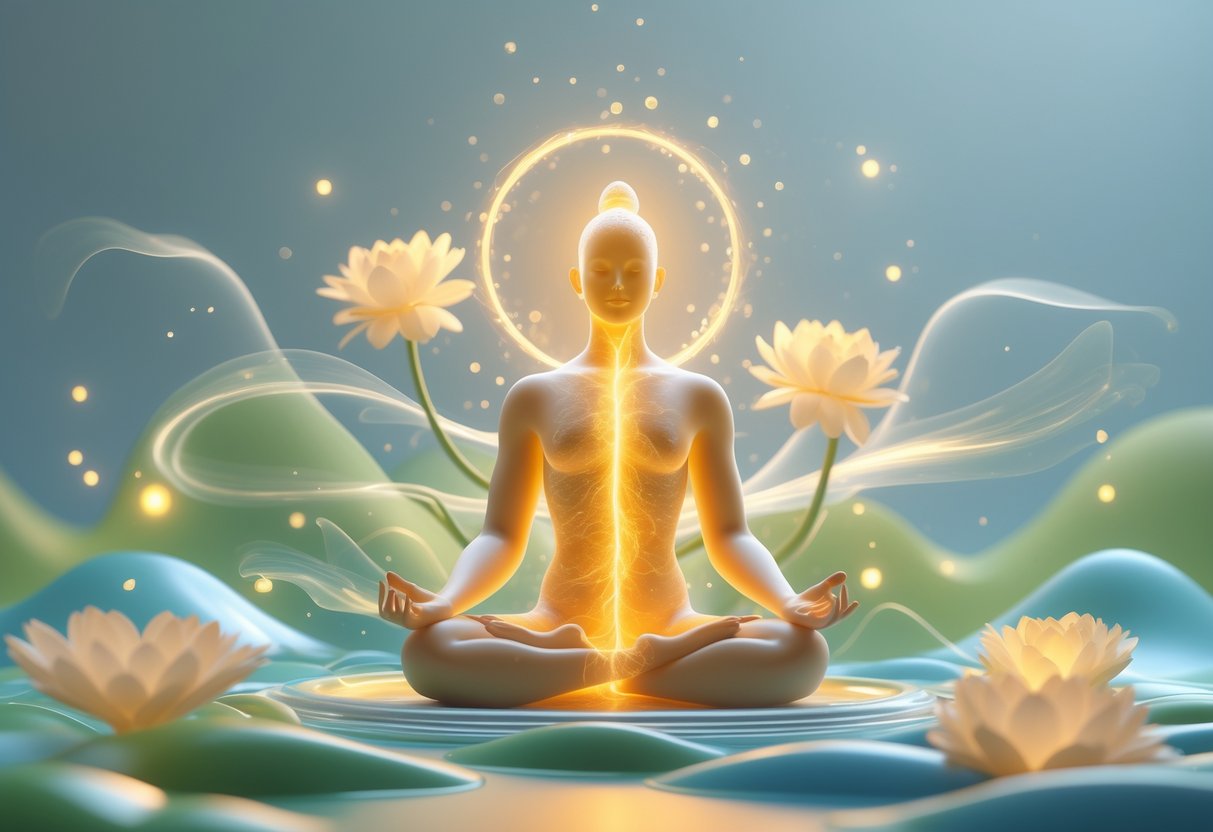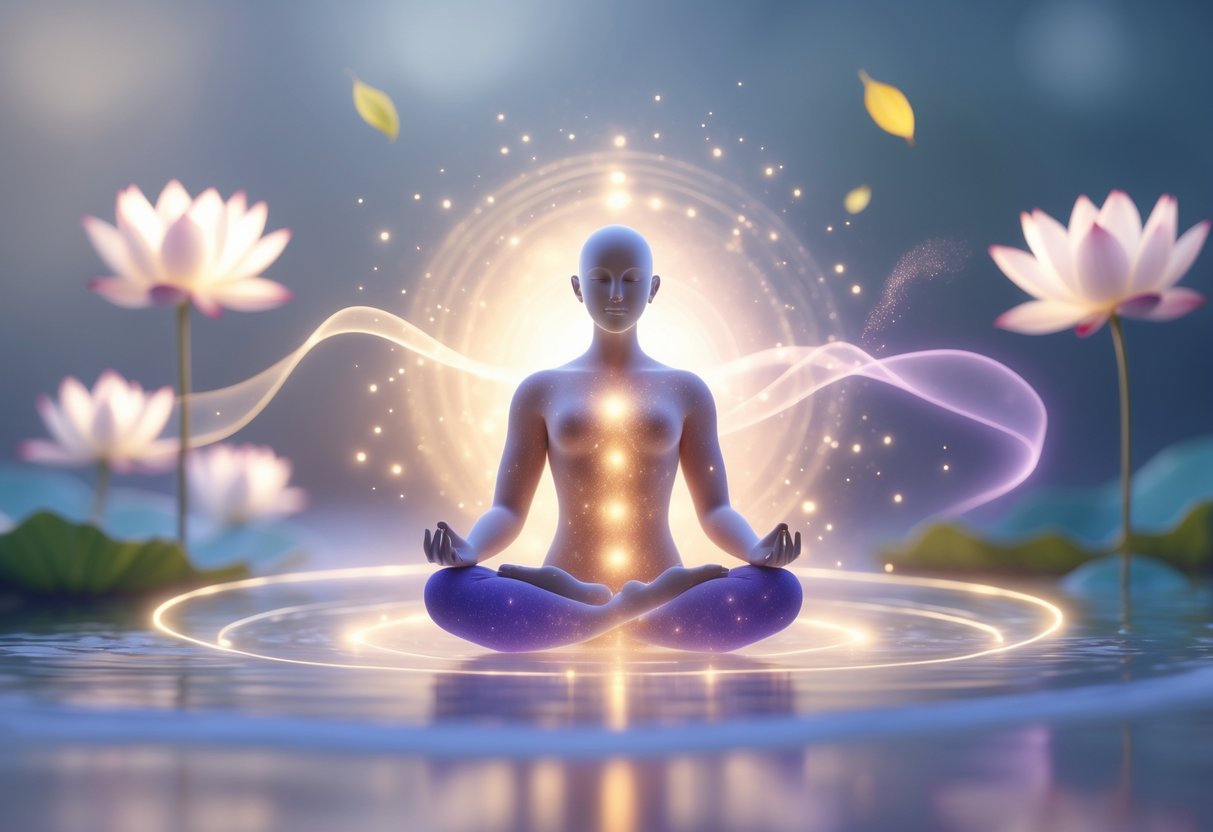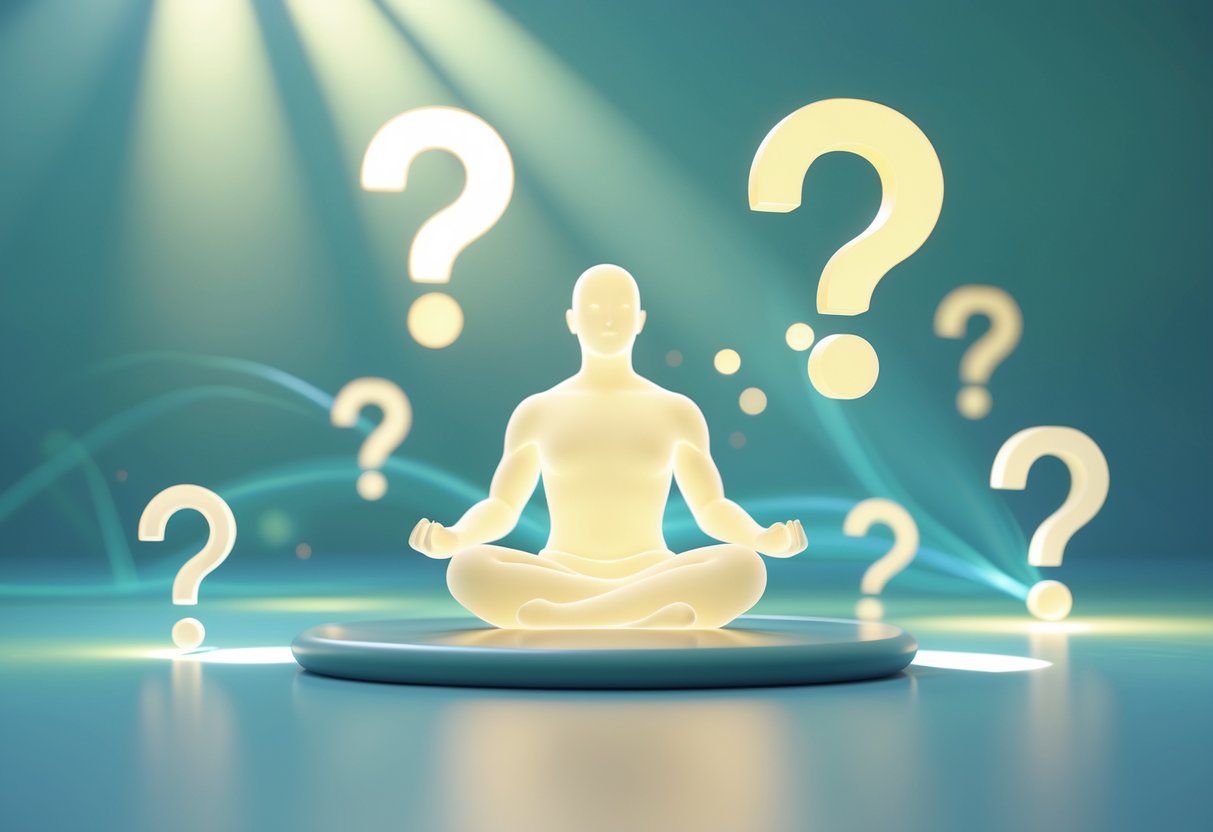Healing Done Relevance: Exploring Its Impact and Importance
Updated On: November 13, 2025 by Aaron Connolly
Understanding Healing Done Relevance

Healing done relevance is all about making the healing process actually mean something for someone’s life. It’s not just about treating symptoms—it’s about making sure every healing step really matters for restoring wellbeing.
Core Concept of Healing
Healing is a personal journey toward wholeness. It goes way beyond just fixing what’s broken.
Medical research points out that healing means reconciling tough experiences with our sense of self.
Healing works on a bunch of levels at once. It touches our physical health, emotions, mental clarity, and even spiritual life.
This is pretty different from just treating symptoms in isolation.
True healing turns suffering into understanding. When illness, injury, or trauma hits, we often feel cut off from ourselves or others.
The healing journey helps us rebuild those lost connections.
You don’t need perfect physical health to heal. Plenty of people find real healing even while living with chronic illness or nearing the end of life.
The focus moves from erasing problems to weaving those experiences into a meaningful life story.
Healing happens among others, not just alone. Relationships, community support, and professional guidance all play a part.
Distinction Between Healing and Curing
Curing gets rid of disease; healing restores the person. That difference really changes how we approach health and recovery.
Curing goes after specific conditions with things like medication, surgery, or therapy. We measure success by fewer symptoms or better test results.
This is the biomedical approach—just fixing what’s wrong.
Healing, though, looks at the whole experience of illness or distress. It asks how health problems affect identity, relationships, purpose, and daily life.
Someone can heal emotionally and spiritually even if their physical condition stays the same.
| Curing | Healing |
|---|---|
| Eliminates symptoms | Restores wholeness |
| Medical interventions | Personal transformation |
| Measurable outcomes | Subjective experience |
| Body-focused | Whole-person approach |
Most people need both curing and healing. If you break a bone, you need medical treatment to fix it.
But you might also need healing to process the trauma, adjust to new limits, or regain confidence.
Healthcare works best when it brings both together instead of picking just one.
The Importance of Relevance in Healing
Relevant healing hits at what matters most in someone’s life. Generic approaches usually miss the mark because they ignore individual values, goals, and circumstances.
Personal relevance means really understanding each person’s story. What gives their life meaning? Who matters most to them? How do they define wellbeing?
Effective healing builds on these things instead of forcing outside standards.
Cultural relevance matters, too. Some people lean on medical science, others on spiritual practices, and lots use a mix.
Relevant healing respects those differences.
Timing plays a role. People might not be ready for certain healing approaches right after trauma or a new diagnosis.
Healing unfolds naturally when what we offer matches someone’s current needs and life situation.
Practical relevance means healing fits real life. Advice that ignores work, family, or money struggles just falls flat.
Sustainable healing adapts to reality, not the other way around.
Meaningful healing turns pain into purpose. When people see how their healing journey connects to values and relationships, they usually engage more and get better results.
How Healing Impacts Disease and Recovery
Healing shapes both chronic and acute illnesses through a mix of physical recovery and mental wellbeing. Biological repair systems and psychological factors work together—sometimes for better, sometimes for worse.
Role in Chronic Illness
Chronic illness brings challenges that go way beyond just physical symptoms. People with long-term conditions often feel a sense of loss and isolation as their bodies change.
Healing changes how illness feels. Instead of just managing symptoms, healing helps people find wholeness even with their condition.
It’s about learning to live well with chronic disease, not just hoping for a cure.
Healing helps people:
- Reconnect with parts of themselves untouched by illness
- Build new relationships with their changed bodies
- Find meaning in what they’re going through
Mental adaptation is huge. When someone develops a chronic condition, they have to rewrite their own story.
That shift in narrative can matter more than the medical treatment.
Research shows people can feel healed even if their disease doesn’t go away. They learn new ways of being whole, illness and all.
Physical and Psychological Factors
Mind and body team up during recovery in ways we’re still figuring out. Stress hormones slow down wound healing and mess with the immune system.
A patient’s mindset makes a real difference. People who expect to recover often heal faster.
This isn’t just wishful thinking—real biological changes happen.
Key things that affect healing:
- Stress – High stress slows repair and ramps up inflammation
- Social support – People heal better when they feel cared for
- Sleep – Most body repair happens during deep sleep
- Emotional state – Depression can drag out healing by hurting immune function
Healthcare settings play a role, too. Just being in a medical environment—white coats, equipment, hospitals—can trigger healing responses before any treatment starts.
Providers who build real connections with patients usually see better results. Feeling understood and cared for lowers stress and kicks in the body’s own healing systems.
Links to Mental Health Outcomes
Mental health and physical healing are tightly linked. Trauma can change the brain in ways that either block or boost recovery.
The brain is surprisingly adaptable. Even after trauma or illness, neural pathways can reorganize to help healing.
But this takes time and the right environment.
Mental health affects healing through several paths:
- Inflammation – Depression raises inflammation and slows recovery
- Pain – Anxiety can make physical symptoms feel worse
- Following treatment – Mental health influences whether people stick to medical advice
- Immunity – Psychological stress weakens the immune system
Recovery often means psychological transformation as much as physical repair.
People don’t just go back to how they were—they develop new strengths and perspectives during healing.
Evidence-based practices like mindfulness, social support, and meaning-making help people rise above suffering, not just survive it.
The best healing happens when healthcare treats both the body and the mind together.
Healing and Mental Health Challenges
Mental health challenges in esports hit players at every level—from casual gamers to pros. Anxiety, depression, trauma, and burnout show up all over gaming, and understanding them helps us step in before things get out of hand.
Addressing Anxiety and Stress
Performance anxiety hits esports athletes just like it does traditional sports stars. The pressure of live streams, tournaments, and keeping up rankings can be intense.
A lot of players deal with social anxiety from online interactions. Toxic chat, team drama, and public judgment make it worse.
This is especially true in team games where communication breakdowns hurt everyone.
Physical symptoms pop up, too—racing heart, sweaty palms that mess with grip, tension headaches from too much focus.
These aren’t just nerves—they’re real stress reactions.
Coping strategies that help:
- Breathing exercises between matches
- Progressive muscle relaxation during queues
- Setting realistic goals
- Taking regular breaks from competition
Heads up: Hiding from anxiety by gaming even more usually backfires. Professional counseling can help esports athletes build better coping skills.
Understanding Depression and Burnout
Gaming can both hide and trigger depression. Long sessions might feel productive but sometimes just mean avoiding real-life problems.
Burnout happens when gaming stops being fun. Players feel drained, cynical, and disconnected from their love for games.
You’ll notice:
- Losing interest in favorite games
- Feeling wiped out after short sessions
- Getting irritable with friends or teammates
- Skipping basic self-care
Recovery usually means stepping away from the grind. Some pros take breaks, try new games just for fun, or focus on their physical health for a while.
The “grind mentality” in gaming culture often celebrates overwork. But sustainable practice means planning rest days, mixing up activities, and being honest about what motivates you.
A lot of pro teams now hire mental health coaches. They know emotional wellbeing is key for performance and long careers.
Healing from Trauma
Gaming spaces can expose players to harassment, cyberbullying, and toxic behavior. These things leave real scars, especially for younger gamers.
Common trauma sources:
- Doxxing
- Long-term harassment
- Death threats from strangers
- Betrayal by friends or teammates
Many players become hyperaware online. They watch chat for threats, avoid voice comms, or leave games early when things get tense.
Healing focuses on regaining safety and control:
| Strategy | Application | Timeframe |
|---|---|---|
| Boundary setting | Block/report systems, private lobbies | Immediate |
| Gradual exposure | Starting with trusted friends only | 2-4 weeks |
| Professional therapy | Processing specific incidents | 3-6 months |
Trauma-informed gaming means building spaces where players feel safe and heard. That means clear reporting tools and taking harassment seriously.
Some players heal by changing their gaming identity—new usernames, different groups, or switching to solo games while processing tough experiences.
Psychology of Healing Relevance
The psychology of healing leans hard on empathy and clear communication. These two things build trust between healers and people looking for help.
Empathy and Emotional Connection
Empathy is the heart of effective healing relationships. When we feel understood, our brains actually process pain and stress differently.
Neuroscience backs this up. Empathetic connections change how we handle tough emotions.
Our brains mirror the feelings of those around us through special neurons.
This mirroring explains why healing often speeds up in supportive relationships. The brain’s stress response chills out when we feel truly heard.
Social healing happens naturally in humans (and even in other social animals). We’re wired to respond to caring from others.
Key empathy factors:
- Listening actively, without judging
- Reflecting back the emotions we see
- Showing real concern for someone’s wellbeing
- Making space for people to be vulnerable
Language and Communication in Healing
The words we use during healing conversations really matter. Language shapes how we make sense of what we’re feeling.
Good healing communication means using clear, simple words—no jargon. Direct language helps people feel less lost.
It’s also important to validate what others are going through. Saying things like “that sounds really tough” shows you recognize their pain without trying to fix it right away.
Tone matters just as much as words. Calm, steady voices help regulate someone else’s nervous system during tough talks.
Communication techniques that help healing:
- Reflective listening—repeating what we’ve heard
- Open-ended questions—inviting deeper conversations
- Validation statements—letting people know their experiences are real
- Pausing—giving people time to process
Optimal Healing Environments (OHE)
An OHE brings together four main areas—our thoughts, relationships, behaviors, and physical spaces—to create the best shot at healing. These areas all influence each other, so when you improve one, you boost the others as well.
Core Domains of OHE
The OHE framework centers around four main areas that help support healing.
Internal Environment is all about your personal thoughts and feelings. Healing intention means you focus your mind on getting better. Personal wholeness happens when your mind, body, and spirit actually work together.
Interpersonal Environment is about the relationships you have with others. Healing relationships grow when people connect to help someone heal. These connections need trust, honest communication, and real care.
Behavioural Environment covers healthy lifestyle choices and integrative care. Good lifestyles mean eating well, moving your body, resting, and managing stress. Integrative care mixes different treatments to help people heal more fully.
External Environment includes the places you spend time and how you treat the planet. Healing spaces use design choices that make people feel better, like sunlight or quiet corners. Caring for the environment means cutting down on waste and choosing eco-friendly habits.
Synergy Between People and Environment
When these four OHE areas come together, the healing effect gets stronger than if you focus on just one.
The physical environment shapes how people feel and heal. Calm, well-designed spaces lower stress and help with recovery. Nature—like plants or sunlight—can lift your mood and sometimes even help your body heal faster.
Healing behaviours spread in these spaces. When healthcare workers act mindfully and show real care, it rubs off on patients and families. This creates a vibe where everyone is rooting for each other’s healing.
People and their surroundings keep influencing each other. A peaceful room can calm someone down, which helps them make better health decisions. Good relationships with healthcare providers make it easier for people to stick with treatment and take care of themselves.
It goes both ways—when people bring positive energy and healing intentions into a space, they make it more healing for everyone else too.
Evolutionary and Social Perspectives on Healing

Healing behaviours have evolved as survival tools. They help people and communities recover from both physical and emotional harm. These natural processes really depend on social connections and support networks.
Evolution of Healing Behaviours
Our healing instincts go way back. Early humans who helped injured group members improved their chances of survival.
Basic healing behaviours like emotional contagion, empathy, and self-regulation let our ancestors care for sick members of the group. Chimpanzees and other social animals show similar patterns.
Researchers have found that healing ceremonies across cultures often include:
- Physical touch for comfort
- Body language that encourages helpfulness
- Explanations for why illness happens
- Group participation in recovery
Mental health support follows these same patterns. We naturally want to help people who are struggling emotionally. This urge comes from evolution favouring groups that care for everyone.
Modern therapies build on these ancient roots. They use our natural empathy and social bonds to create healing spaces.
Role of Social Networks and Support
Strong social connections boost healing for both body and mind. Our brains recover better when we feel supported.
Community emotional healing matters most during public health crises. Social networks bring the psychological stability people need to recover. People tend to heal faster when friends and family stick around.
Support networks help by:
- Sharing emotional experiences to fight isolation
- Offering practical help to ease daily stress
- Giving new perspectives to solve problems
- Being consistently present to create security
Indigenous healing practices show how involving the whole community strengthens recovery. These traditions often bring in extended family and community members for healing.
Mental health treatment works best with social support. Group therapy, family involvement, and peer support all tap into our need for community during tough times.
Self-Healing and Personal Empowerment

Self-healing means you direct your own recovery, and building resilience gives you strength for whatever comes next.
Techniques for Self-Healing
You can start healing with simple daily habits that address emotional wounds and limiting beliefs. Mindfulness meditation helps you notice painful thoughts without judging them, giving you space between yourself and those reactions.
Emotional release techniques work well for processing pain. Try journaling about tough experiences for 10-15 minutes a day. Don’t worry about spelling or grammar—just let it flow.
Self-compassion practices help quiet that harsh inner critic. When you catch yourself being negative, ask: “What would I say to a friend in this situation?” It’s a small change, but it shifts your self-talk.
| Technique | Time Required | Cost |
|---|---|---|
| Daily journaling | 10-15 minutes | Free |
| Mindfulness apps | 5-20 minutes | £0-10/month |
| Breathing exercises | 3-5 minutes | Free |
Heads up: Don’t try every technique at once. Choose one or two and stick with them for a few weeks.
Energy healing practices like gentle yoga or tai chi can release tension that holds emotional pain. Even a short stretching session can help shift stuck energy.
Building Resilience
Resilience grows when you practice healthy coping skills before you need them. You build emotional strength by using stress management tools during calm times—not just in a crisis.
Setting boundaries protects your energy and keeps overwhelm at bay. Try saying no to just one extra thing this week and see how it feels to put yourself first.
Self-care routines give you comfort and renewal you can count on. Make a simple weekly plan with activities you actually enjoy—not just what you think you “should” do.
Physical habits support mental resilience too. Sleeping enough, eating well, and moving your body help manage stress hormones. It doesn’t have to be perfect—being consistent is what matters.
Quick tip: Make a “resilience toolkit”—a list of 5-7 things that reliably boost your mood. Keep it handy for rough days.
Building your support network gives you a stronger base for healing. This can be friends, support groups, or professional counsellors who really get trauma recovery.
Spirituality and its Influence on Healing

Spiritual beliefs and practices open up powerful paths for healing. They help people connect with deeper meaning and purpose as they recover. Faith-based approaches and spiritual practices often work together to support emotional resilience and even physical healing.
Faith and Healing
Faith often anchors people during their healing journey. It brings hope and strength when facing illness or trauma.
Studies show that patients with strong spiritual beliefs usually recover better. They often feel more satisfied with life and less anxious during treatment.
Faith helps people find meaning in tough times. This shift can totally change how someone experiences illness.
How faith supports healing:
- Lowers stress and brings calm
- Offers emotional comfort during challenges
- Strengthens coping
- Gives a sense of purpose
More healthcare providers now see faith as part of good patient care. Some hospitals have chaplains or spiritual care teams.
Faith communities give social support too. Being around people who share your beliefs makes recovery feel less lonely.
You don’t need to be religious for faith to help. Personal beliefs about the universe or nature can offer the same benefits.
Spiritual Practices in Recovery
Certain spiritual practices give real tools for healing. These help people reconnect with themselves and find balance.
Some effective spiritual practices:
| Practice | Benefits | How it Helps |
|---|---|---|
| Meditation | Reduces stress, sharpens focus | Calms mind and body |
| Prayer | Comforts, builds hope | Connects to a higher power |
| Gratitude exercises | Improves mood, shifts view | Focuses on positives |
| Nature connection | Lowers anxiety, brings peace | Grounds you in the moment |
Mindfulness meditation is especially helpful in recovery. It keeps people present instead of stuck in the past or worrying about the future.
Prayer lets you express fears and hopes. Whether formal or casual, it offers comfort and release.
Gratitude practices help change negative thinking. Writing down three things you’re grateful for each day can boost wellbeing.
Spending time in nature connects you to something bigger. Even a short walk outside can lower stress and improve your mood.
These practices work best when you pick ones that fit your own beliefs. What matters most is finding what genuinely brings you comfort and strength.
Treatment of Mental Illness and Healing Practices

Mental health treatment blends evidence-based medicine with complementary healing methods. Many people use traditional healing along with modern psychiatric care for conditions like depression, anxiety, and psychosis.
Modern Approaches
Modern psychiatry relies on medications, therapy, and structured treatments for mental illness. Doctors prescribe antidepressants, mood stabilisers, and antipsychotics for various conditions.
Therapy options include cognitive behavioural therapy (CBT), dialectical behaviour therapy (DBT), and psychodynamic therapy. These help people change how they think and cope with stress.
Hospitals and clinics step in for serious mental health crises. Crisis teams respond to emergencies like psychotic episodes or suicide risk.
Treatment challenges can include long waits, high costs, and not enough access in rural places. Many people can’t afford private care and depend on busy public services.
Medication usually works best with therapy. Treatment plans need tweaks because people respond differently.
Complementary Therapies
Traditional healing often works alongside medical treatment. Faith healers, herbalists, and spiritual guides offer alternative approaches that focus on the whole person.
Common methods are prayer, herbal remedies, massage, and spiritual ceremonies. These usually see mental illness as more than just a medical issue.
Some studies show traditional practices can help with depression and anxiety. Spiritual support can lower stress and bring hope.
Integration challenges pop up between doctors and traditional healers. Medical staff sometimes see traditional ways as unscientific, while healers might feel dismissed.
A lot of people find the best results by combining both. They use medication for tough symptoms and get emotional support from traditional healing.
Traditional and Indigenous Healing Methods

Traditional healing offers holistic approaches that care for physical, mental, and spiritual wellbeing. These methods focus on the connection between people, community, and nature.
Traditional Medicine Approaches
Traditional medicine covers a wide range of healing passed down through generations. These systems see health as a balance between mind, body, and spirit.
Plant-based remedies are at the heart of many traditional systems. Healers use specific plants for different issues, often mixing them in careful ways.
Ceremonial practices matter a lot in traditional healing. These might include:
- Sweat lodge ceremonies
- Smudging rituals
- Prayer and chanting
- Sacred pipe ceremonies
Land-based healing helps people reconnect with their ancestral lands. This can mean gathering traditional medicines, walking sacred paths, or just spending time in nature.
Traditional medicine often looks for root causes instead of just treating symptoms. Practitioners think about social, spiritual, and environmental factors that affect health.
Many traditional systems focus on prevention through lifestyle, diet, and spiritual wellness.
Role of Traditional Healers
Traditional healers keep ancient knowledge alive in their communities. They train for years to master complex healing practices.
Elder healers pass on wisdom through stories and direct teaching. This keeps healing traditions tied to cultural values and community needs.
Healers often specialise:
- Medicine people work with plants
- Ceremonial leaders guide rituals
- Spiritual advisors support emotional and mental health
Traditional healers use a holistic approach to care. They look at relationships, spiritual life, and community ties—not just physical symptoms.
Many healers involve families and communities, not just individuals. This creates support networks that go beyond the treatment itself.
The bond between healer and patient often lasts a long time. This allows for deeper understanding and more complete healing.
Culturally Sensitive Healing
Culturally sensitive healing means treatment should fit a person’s background and beliefs. This approach respects each culture’s way of understanding health and illness.
Cultural competency in healing takes more than just awareness—it asks providers to learn specific traditions, languages, and worldviews. Healthcare workers need real training if they want to work respectfully with traditional healers.
When you blend traditional and Western medicine, you get more well-rounded treatment options. For example:
- Doctors and traditional healers can coordinate care directly.
- Clinics might include traditional practices in their routines.
- Patients can choose the approach that feels right for them.
Community-centered healing goes beyond the individual. It addresses collective trauma and the social issues that shape health. Traditional healing often focuses on building up community bonds and cultural identity.
Indigenous communities need to keep control over their healing practices. This helps prevent cultural appropriation. Following the right protocols makes sure traditional knowledge is shared in a way that’s both respectful and useful.
Healthcare training programs are starting to add more cultural sensitivity education. This shift helps medical staff understand different healing traditions, which often leads to better patient outcomes.
Integrating Healing Done Relevance Into Healthcare

Healthcare systems around the world are starting to blend traditional healing with modern medicine. Physical spaces and cultural details matter a lot when it comes to making these models actually work.
Holistic and Patient-Centred Models
Integration really starts with holistic care approaches that look at physical, emotional, and spiritual health together. Teams work best when they include both medical and traditional practitioners side by side.
Patient-centred models put culture at the core of care. That means designing physical spaces that actually feel welcoming to all kinds of people. Some hospitals now have rooms set aside for traditional healing right next to regular treatment areas.
A few things that make a big difference:
- Collaborative care teams—doctors, nurses, and traditional healers working together
- Shared treatment plans that pull from both worlds
- Cultural liaisons who help everyone understand each other
- Training for medical staff on traditional practices
Patients usually respond better when their own traditions are respected. Trust grows much faster when people see their culture valued in a healthcare setting.
Barriers to Integration
Even with good intentions, some big obstacles get in the way. Discrimination against traditional healing is still a huge problem in many places.
Medical professionals often don’t understand traditional practices. This gap creates tension, especially when patients want to use both systems. High staff turnover makes it tough for healers and medical teams to build lasting relationships.
Other common barriers:
- Limited knowledge about traditional medicine among staff
- Status differences based on education
- Constant staff changes that break up partnerships
- Not enough equipment or resources for traditional healers
- Fewer young people interested in traditional healing
Physical spaces can be a real challenge too. Many hospitals just aren’t set up for different healing practices. Traditional healers might get stuck working in the wrong kind of space, or left out completely.
Money is another issue. Traditional healers often don’t get paid, so it’s hard for them to keep going alongside paid healthcare workers.
Frequently Asked Questions

Healing depends on a mix of factors working together. Nutrition, rest, emotional balance, hydration, and physical activity all play a part in how well we recover.
What are the key factors that affect the effectiveness of healing therapies?
A few things really shape how well healing therapies work. Timing matters—a quick start usually leads to better results.
Your current health status makes a difference. People with strong immune systems tend to heal faster than those who don’t.
The kind of injury or illness you have also changes things. Minor cuts heal quickly, but deep wounds or chronic conditions take more time.
Age is another factor. Younger people often heal faster because their bodies repair themselves more easily.
How closely you follow your treatment plan affects your outcome. Sticking to therapies as directed generally leads to better success.
Could you explain how diet and nutrition contribute to the healing process?
Nutrition gives your body the tools it needs to repair itself. Protein rebuilds damaged tissues, while vitamins and minerals keep your immune system strong.
Vitamin C helps your body make collagen, which is key for healing wounds. Oranges, strawberries, and bell peppers are good sources.
Zinc is important too. You can get it from meat, nuts, and seeds.
Your body needs extra energy to heal, so eating enough is crucial.
Anti-inflammatory foods like fish, leafy greens, and berries can help reduce swelling and pain. These foods set the stage for quicker healing.
What role do rest and sleep play in supporting recovery from illness or injury?
Sleep is when your body does most of its repair work. Growth hormone levels go up during deep sleep, which helps tissues regenerate.
Getting enough sleep helps your immune system work better. People who rest well usually fight off infections more easily.
Aim for 7-9 hours of sleep each night if you’re recovering. Sometimes you might need even more.
Resting also keeps you from overusing injured areas, giving them time to heal.
Not getting enough sleep can really slow down recovery. Studies show that poor sleepers take longer to get better.
How does one measure the impact of emotional well-being on physical health recovery?
High stress can slow healing. Cortisol and other stress hormones lower immune function and delay tissue repair.
Depression makes it harder to stick to treatment plans. People who feel down might skip meds or avoid recommended activities.
Anxiety can make pain feel worse. Managing stress often helps with pain control during recovery.
Good social support speeds up healing. People with strong relationships often recover faster.
Mental health professionals use questionnaires to track emotional states during recovery. This helps them see how mood affects healing.
Relaxation techniques like deep breathing and meditation can help. They lower stress hormones and may improve sleep.
Can you highlight the importance of hydration in maintaining and promoting healing?
Water is a big deal—about 60% of your body is made of it, and you need it for every healing process. Staying hydrated helps nutrients reach injured areas.
If you don’t get enough fluids, wounds heal much slower. Your body can’t make new cells or remove waste properly without water.
Blood needs water to carry oxygen and nutrients to tissues. Hydration keeps your blood volume and circulation in the right range.
Try for 8-10 glasses of water a day while recovering. If you’re on certain meds or have a fever, you might need even more.
Watch for signs of dehydration like dark urine, dry mouth, or fatigue. These can slow down healing and make recovery harder.
In what ways does physical activity influence the speed and quality of healing?
Gentle movement gets your blood flowing, which delivers nutrients and oxygen right where your body needs them most. These days, doctors almost never tell people to just stay in bed.
Light exercise keeps your muscles from getting weak and your joints from stiffening up. Even a short walk can really help.
If you push yourself too hard, you might actually slow down your healing by hurting the tissue more. Honestly, it’s all about finding that sweet spot.
Physical therapists step in to help people regain movement after injuries. They create exercise plans that help you heal without risking more damage.
When you move, your body can get rid of swelling faster because fluid drains away more easily. That often means less pain and a quicker recovery.
Staying active does wonders for your mood during recovery. Exercise gives you a little endorphin boost, making things feel a bit easier.

